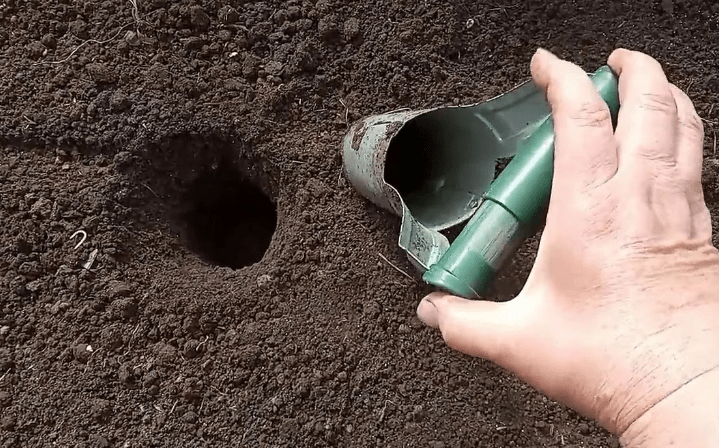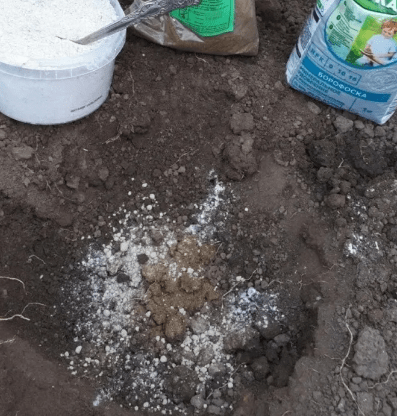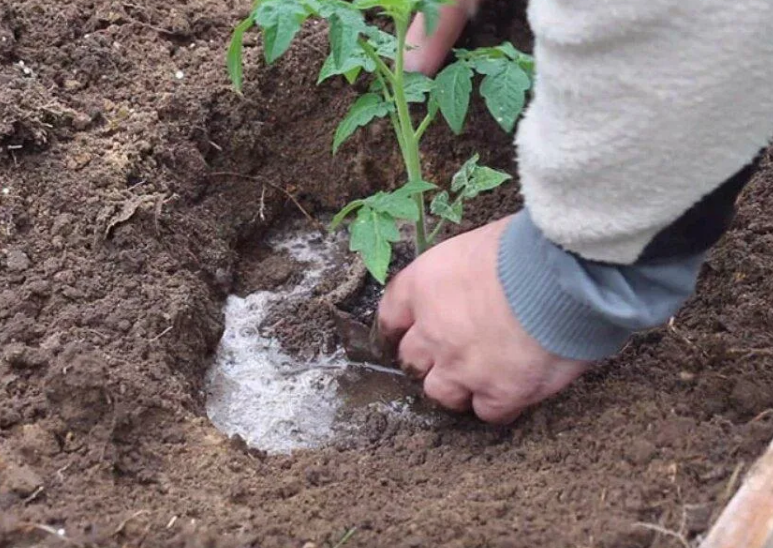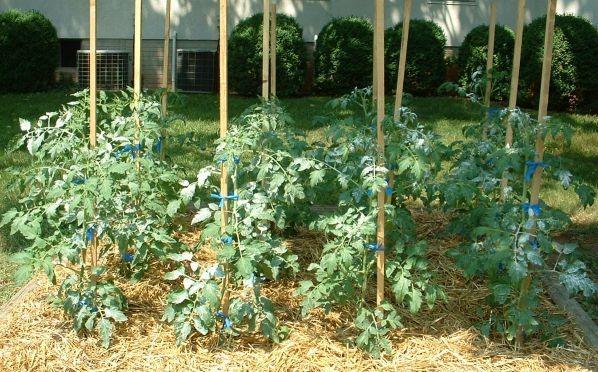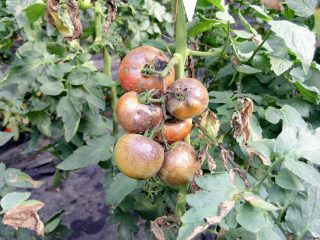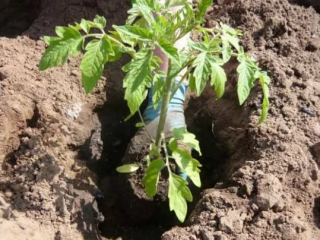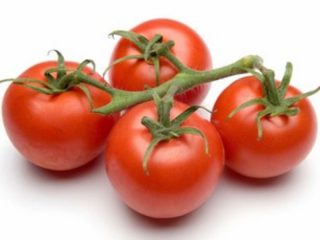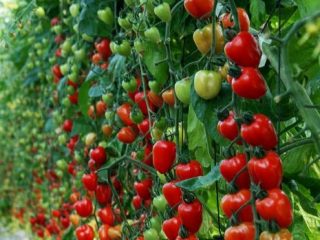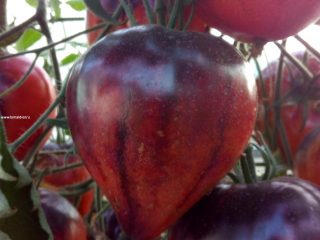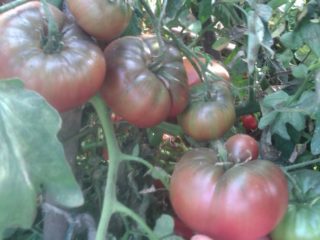Content
The Masterpiece tomato is a proven variety that thousands of farmers and amateur gardeners have become familiar with. He is the leader among other large-fruited red tomatoes. The fruits are pink “beefsteaks”, fleshy and juicy, with a sweet taste.
Breeding history
The originator of the Masterpiece variety is LLC Agrofirm "DEMETRA-SIBERIA". In 2007, information about it was entered into the State Register of Selection Achievements. The distinctive features of the tomato are its large size and pleasant pulp.
Description of the tomato variety Masterpiece
Judging by the reviews and photos, the new Masterpiece tomato forms indeterminate, non-standard spreading bushes up to 1.7 m high and higher. Their growth must be limited by pinching the tops.
Description of the Masterpiece tomato:
- The stems are powerful and strong, but need to be tied to a support. They are capable of forming many stepsons (side shoots), which must be regularly plucked off to increase the number of ovaries.
- One flower cluster produces up to six large fruits of a flat-round shape with well-defined ribbing. Tomatoes are painted red. The first inflorescence appears above the 10-11th leaf.
- The leaves are large, light green.

The best yield results for Masterpiece tomatoes can be achieved if the bushes are formed into one stem
Characteristics of the Masterpiece tomato
Masterpiece tomatoes fully live up to their name. They are delicious to look at and can reach surprisingly large sizes. Provided the bush is formed into one trunk, regular pinching and rationing of flower clusters, the weight of the fruit can reach up to 1 kg. But if you ignore the care requirements, then its weight will be no more than 300 g.
The tomatoes taste sweet, with a pleasant unobtrusive sourness. Judging by reviews from gardeners, they are good in salads and juices. The skin is thin, you can’t feel it in food, but it is elastic and protects the fruit from cracking.

High shelf life of fruits and suitability for transportation are valued in farming
When it ripens
The pink tomato variety Masterpiece is mid-season. Tomatoes are formed 110-115 days after sowing. The fruits ripen almost simultaneously. Mass harvesting occurs at the end of August or beginning of September.
Tomato yield Masterpiece
The tomato variety is high-yielding. From one bush, gardeners harvest up to 6 kg of marketable fruits, and from one square meter - about 12 kg. However, crop yields may be affected by growing conditions and the climate of a particular region.
Resistance to adverse factors
Tomatoes of the Masterpiece variety are resistant to adverse factors. They can be grown in regions with short summers - in Siberia and the Urals.They develop and bear fruit equally well both in greenhouses and in the open air.

The Masterpiece variety is resistant to diseases and temperature fluctuations
Growing regions
The Masterpiece variety is grown by gardeners in most territories of Russia. In particular, in the Northern, Central, Volga-Vyatka, Central Black Earth, North Caucasus, Ural, Far Eastern and Western Siberian regions.
Methods of application
Masterpiece tomato fruits have excellent taste and are most often used fresh in salads, sauces and juices. They are suitable for canning in slices and are good for cutting.
Advantages and disadvantages
Masterpiece tomatoes are large, meaty, juicy. They belong to the so-called “beefsteak tomatoes”. This name comes from the word beef, which translated from English means beef or meat.
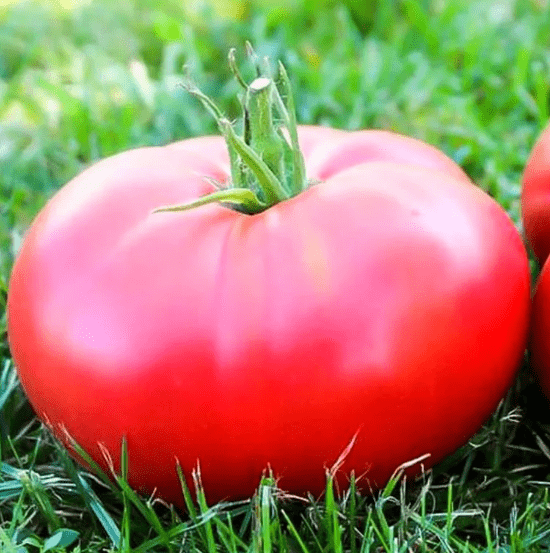
The Masterpiece variety is suitable for gardeners who prefer to grow large tomatoes
Pros:
- resistance to the main diseases of Solanaceae;
- good taste, juicy pulp and pleasant tomato aroma;
- shelf life up to six months;
- high yield and smooth ripening of fruits;
- possibility of growing in a greenhouse and open ground;
- unpretentiousness.
Minuses:
- not suitable for whole-fruit canning;
- needs shaping, pinching and tying;
- If the water regime is disturbed, the fruits may burst.
Landing scheme and rules
In the middle zone and colder regions, return frosts can destroy tomato seedlings. Therefore, they choose the beginning or middle of June for planting. Tomato seedlings are transferred to the greenhouse in April.
Scheme for planting tomatoes in the ground:
- Dig holes to a depth of 25 cm, trying to maintain a distance of 70 cm between bushes.Otherwise, the plants will lack light and nutrients.
- A little wood ash and humus is placed in each hole. A layer of sand is poured on top, since tomatoes grow well in loose soils.
- Next, tomato seedlings are planted in the holes along with a lump of earth. The roots are sprinkled with earth on top and compacted with hands.
- Pegs are installed, which are eventually replaced with a longer support, and the stems are tied. After planting, the tomatoes are watered and mulched with freshly cut grass, leaves or straw.
Basic rules for planting tomatoes:
- The beds should be prepared in advance, approximately a week before planting the seedlings.
- Before planting tomatoes, you need to check the soil temperature (with an electronic thermometer with a probe). It should be no lower than 16 °C.
- Tomato seedlings should be buried up to the cotyledon leaves.
- The soil should absorb and release moisture well, be light and loose.
- It is highly undesirable to water and fertilize within seven days after planting seedlings. You need to give the plants time to take root in their new location.
Features of care
A harvest of large tomatoes is the joy and pride of every gardener. But to achieve good results, you need to know how to properly water large-fruited tomatoes.
Bushes of this variety do not like frequent and poor watering. It is better to moisten them abundantly, but as the soil dries out. Favorable time for watering is morning or evening, while the sun is not active. Water should be poured at the root, being careful not to get on the leaves and other parts of the plant. It is necessary to water the bushes once every seven days, pouring at least 5 liters of warm, settled water under each bush.

If watering standards are observed, Masterpiece tomatoes will grow juicy and fleshy
The first time tomato bushes are fed a week after planting in protected or open ground. Bird droppings are usually used as fertilizer in a ratio of 1:20. Then, once every two weeks, the tomatoes are fed with any complex mineral fertilizer.
Bushes of this variety require formation into one stem to obtain a high yield. The first flower cluster must be removed immediately. Throughout the season, you need to cut off the stepsons, leaving stumps of 2-3 centimeters.

If watering standards are observed, Masterpiece tomatoes will grow juicy and fleshy
Masterpiece tomato bushes require additional support, to which you need to tie not only the stems, but also the fruit clusters
Disease and pest control
In unfavorable conditions, the Masterpiece tomato can suffer from root rot and late blight. For preventive purposes, it is recommended to follow the treatment schedule and adhere to the rules of agricultural technology. Bushes can be sprayed with non-toxic preparations, for example, Trichodermin or Phytocid. They will help maintain the health of the plant at a high level.

Gardeners praise the Masterpiece tomato variety for its strong immunity to the main diseases of the Solanaceae
When pests appear, plants need treatment with bio-insecticidal preparations (Biotlin and Fitoverm). They are diluted in accordance with the instructions immediately before the start of the procedure, as they quickly lose effectiveness. In order to prevent the proliferation of harmful insects, it is recommended to spray the bushes with an infusion based on calendula, sage, tansy and yarrow.

The specific smell of bitter herbs repel whiteflies, spider mites and aphids - the main pests of tomato
Conclusion
Tomato Masterpiece is a long-awaited find for many inveterate gardeners. The variety is extremely unpretentious and is suitable for growing outdoors and in greenhouse soil. The hybrid impresses with its incredible fruit size and excellent taste. Suitable for personal use and farming, as it easily tolerates transportation and storage.
Reviews from gardeners about the Masterpiece tomato variety

